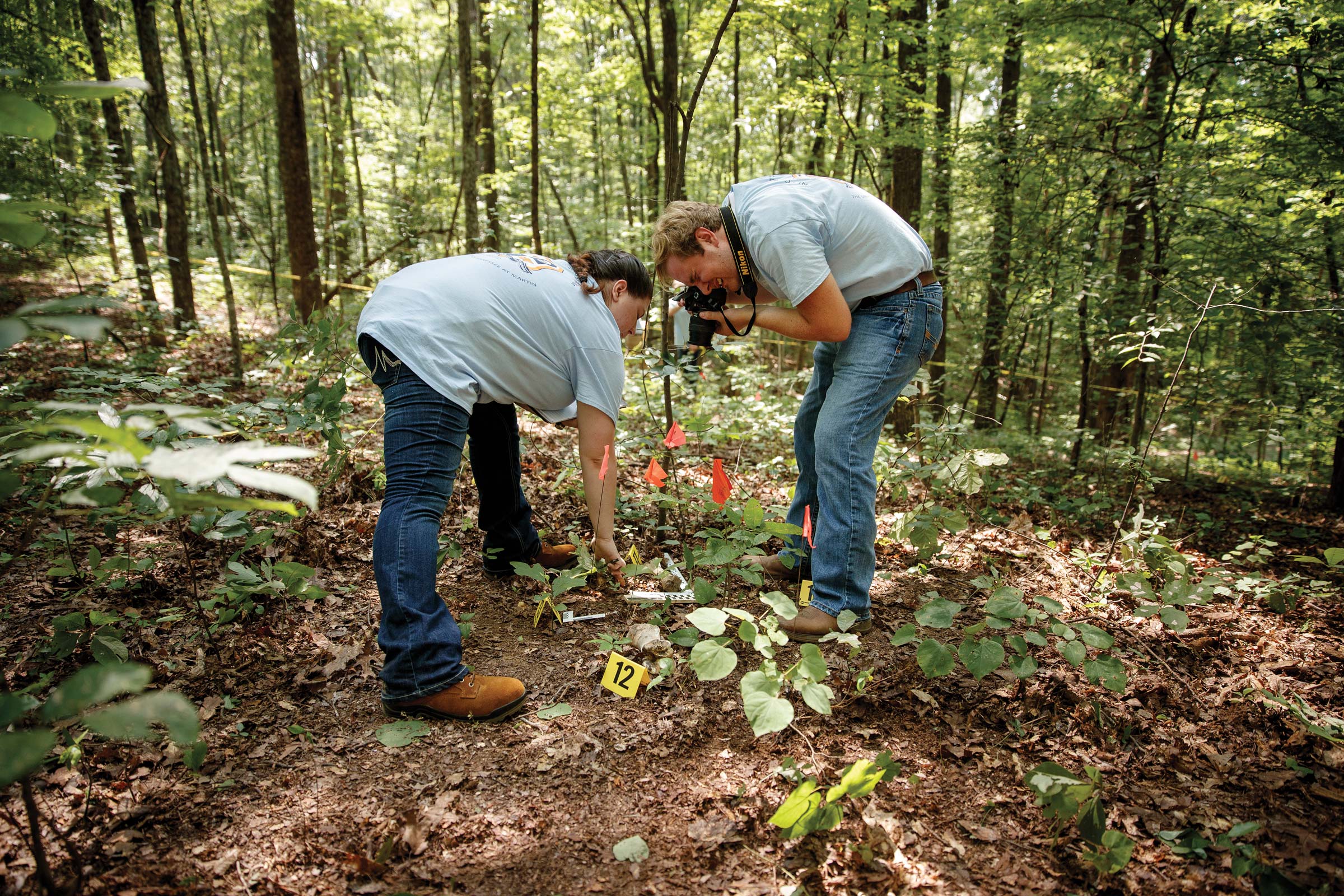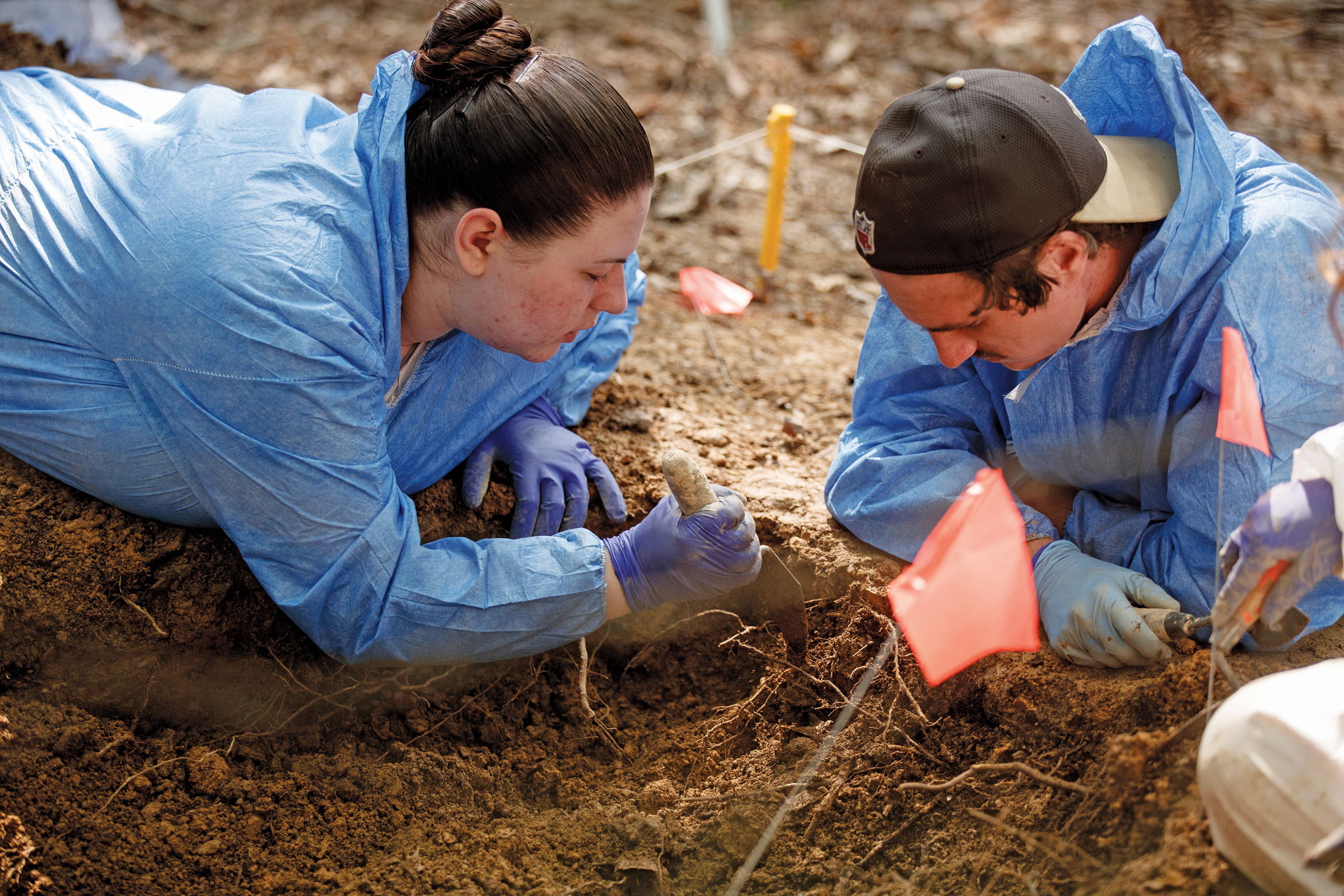By Susan Robertson | Photos by Nathan Morgan
A steep gravel road deep in the Cumberland Forest leads professional law enforcement officers to the newest outdoor facility in the training arsenal of the University of Tennessee Law Enforcement Innovation Center (LEIC), an agency of the UT Institute for Public Service.
The Outdoor Forensic Training Center, a multi-agency collaboration, is used exclusively for law-enforcement training. LEIC uses the site during the forensic investigation portions of its National Forensic Academy and its National Forensic Academy Collegiate Program.

Extending beyond the classroom walls, the site allows for expanded training not available in other programs. Within the Cumberland Forest—situated in Morgan and Anderson counties—and acreage of the nearby UT Forest Resources AgResearch and Education Center, the new forensic training center offers shooting-scene reconstruction, bloodstain-pattern analysis, post-blast examinations or arson investigations.
“This site only adds to the depth of our hands-on, practical training,” says Don Green, LEIC executive director. “Through the outdoor facility, we are able to provide our NFA attendees with real-life investigative experience.”
Academy training staff Dan Anselment and Melanie Wolfenbarger worked closely with renowned forensic anthropologist Bill Bass; Murray Marks, UT Knoxville associate professor of forensic odontology; and Arpad Vass, a teaching associate with LEIC. Through an arrangement with the UT Institute of Agriculture, the Institute for Public Service and LEIC acquired property at UT’s Cumberland Forest research site to create a law enforcement training facility for studying human decomposition, clandestine grave and evidence recovery, and forensic entomology.

The center allows crime-scene investigators the flexibility to use traditional search methods and incorporate canines and technological advances in human-remains recovery. Training involves the recovery of human remains and evidence collection in and around the burial site, documentation and photography.
“The Outdoor Forensic Training Center was the most realistic training setting that I have experienced,” says Special Agent Daniella Stuart with the Georgia Bureau of Investigation. “There is no other way to replicate the smells, outdoor conditions and insect activity that you would normally experience on a real crime scene. That training environment was the best part of the National Forensic Academy.”
Since its unveiling in 2016, more than 50 law enforcement agencies have sent investigators through the training.
The academy trains investigators from federal, state, county and local agencies as well as international organizations. Through the 10-week residential program, law enforcement officers learn from expert national instructors in almost every aspect of forensic criminal investigation.
Academy alumni include the U.S. Capital Police who, upon returning to work, were involved in evidence collection at the site of the June 14, 2017, congressional ballfield shooting. State agencies from Georgia, North Dakota, South Dakota, Texas, North Carolina, Ohio and Alaska and Tennessee state and local law enforcement have sent investigators to the training.
The college program, which partners with UT Martin, exposes criminal-justice students to the facility during a three-week session. Students come from all over the country to participate in this one-of-a-kind experience.
“The knowledge I’ve gained in just a week and a half of being down here is something I never would have gained just in a classroom,” says Cooper Elam, a senior at Eureka College in Illinois who attended the college program in summer 2017.



